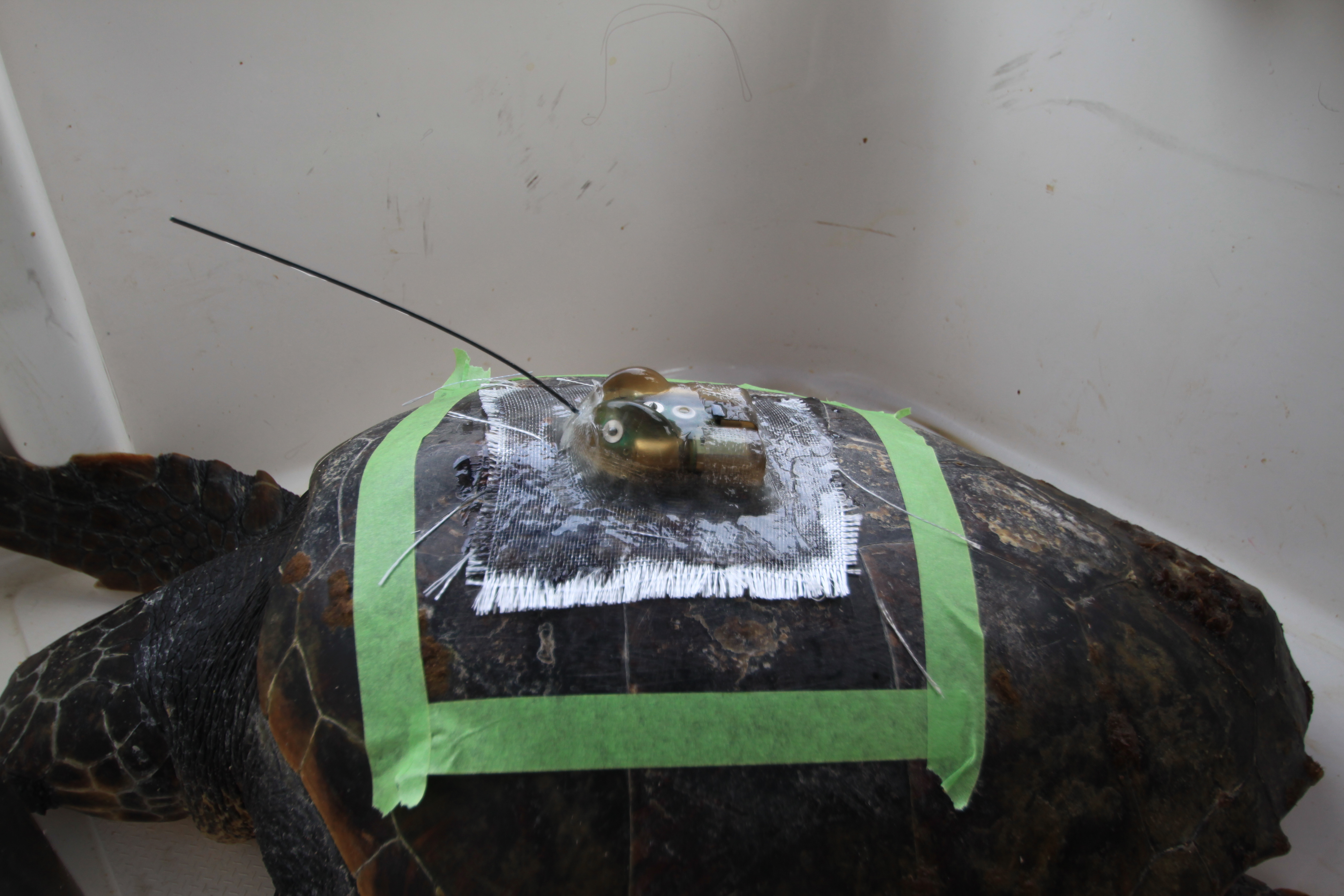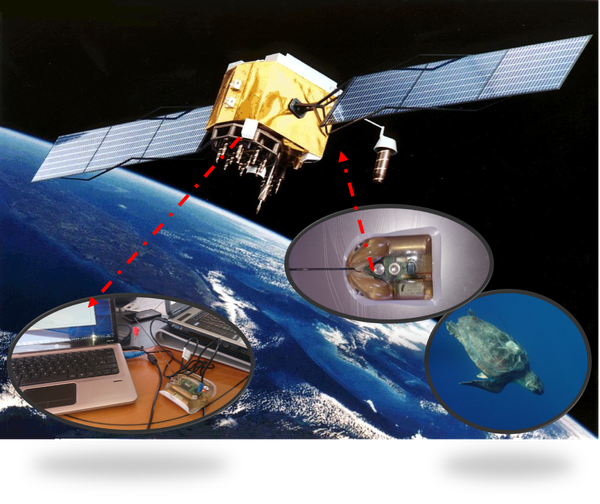How do we track turtles?
In our studies we track two kinds of turtle; a) turtles that have been released from a long line by fishermen, and b) free ranging turtles that we spot during our shipboard surveys.
To capture free ranging turtles we use the technique that is least invasive:
- We stop our boat several hundreds of meters away to avoid disturbing the turtle.
- Two divers approach the basking turtle, slowly.
- After recording data on epibionts, we gently grab the turtle to bring it on board the research vessel.
What type of tag?
In the OASIS Program we use three types of tag:
A: Satellite Tags
These tags are attached to the turtle carapace with epoxy resin and fiberglass tape. Depending on the tag we can get up to 100.000 transmissions of data on location, diving patterns, temperature and time spent basking.
B: VHF Tags
National Geographic Crittercams or Kinematic tags are attached for programmed short periods of time during which the research vessel follows a VHF radio signal to recover the tag and download the data and/or video it has recorded.
C: Acoustic Tags
Thinking of the future we have been deploying the first acoustic tags on loggerhead turtles in the Mediterranean. These tags stay on the turtle and transmit an ultrasonic signal that can be picked up by hydrophone arrays (see www.otn.org, www.sharknet.org and www.tagagiant.org). However, for these tags to be really efficient, we require a network of hydrophone listening stations. Right now, we have a very limited number of hydrophones installed in key sites where we have a greater probabillity of detecting an acoustically tagged turtle.

Receiving an SMS from our turtles
Tags run on battery power, sometimes assisted by a small solar panel.
VHF tags that are recovered can be recharged, but satellite and acoustic tags have a limited life determined by the number of transmissions made. Satellite tags send their transmissions to the satellite system of ARGOS, a system originally developed for sailing races.
ARGOS delivers the transmitted data to researchers directly for analyses. Most research groups share part of this data through the following site: www.seaturtle.org/tracking/?project_id=440
When a turtle surfaces to breathe or bask, the tag starts drying out. If the turtle spends enough time at the surface, the salt water bridge between two sensors on the tag is broken, initiating transmission.

Movements and migration
The basic data of tags is location of the turtle every time the tag spends enough time at the surface to start transmission. Not all transmissions are perfect, so there is quite a lot of filtering to be done before we can obtain the track of each animal.
Diving behaviour
Diving behavior is essential to understand what the turtle is doing and how it is using its habitat. As reptiles, sea turtles are greatly affected by temperature. A turtle in the same region in different seasons can have a very different metabolic rate and therefore also behaviour and habitat use. Data on diving behavior can be of great interest for the management of risks as vessels strikes or bycatch in fisheries.
What happens to the tag?
Tags can last for over a year, or just a few days. There are many different events that can result in tags stopping their transmission before their batteries run dry. Sometimes tags may be recovered after several months or years after their last transmission, either by fishermen or by scientists (see http://inwater.org/?s=hermes&x=0&y=0).
Typical things that can go wrong with tags
Analyzing how, where and when a tag stops transmitting can allow us to understand the potential problems:
- Consumption of battery
- Antenna loss (diving through reefs and in caves, interaction with other turtles or animals)
- Regions of interference (military, geographic or meteorological reasons)
- Failure in tag attachment (growth of carapace, defaults in gluing)
- Death of turtle (constant transmissions and anomalous track if turtle floating on the surface)
- Death of turtle (sudden end to transmissions)





